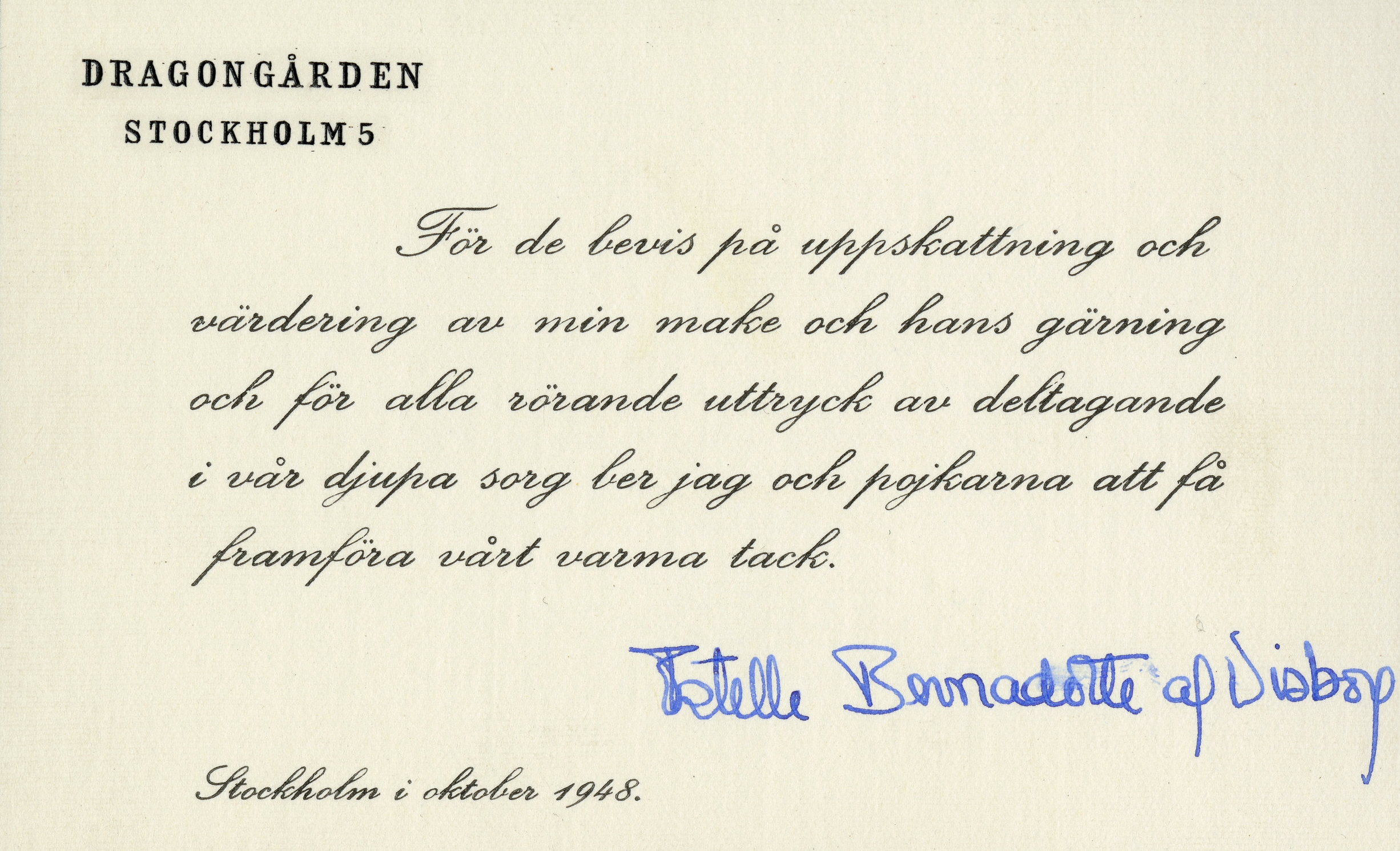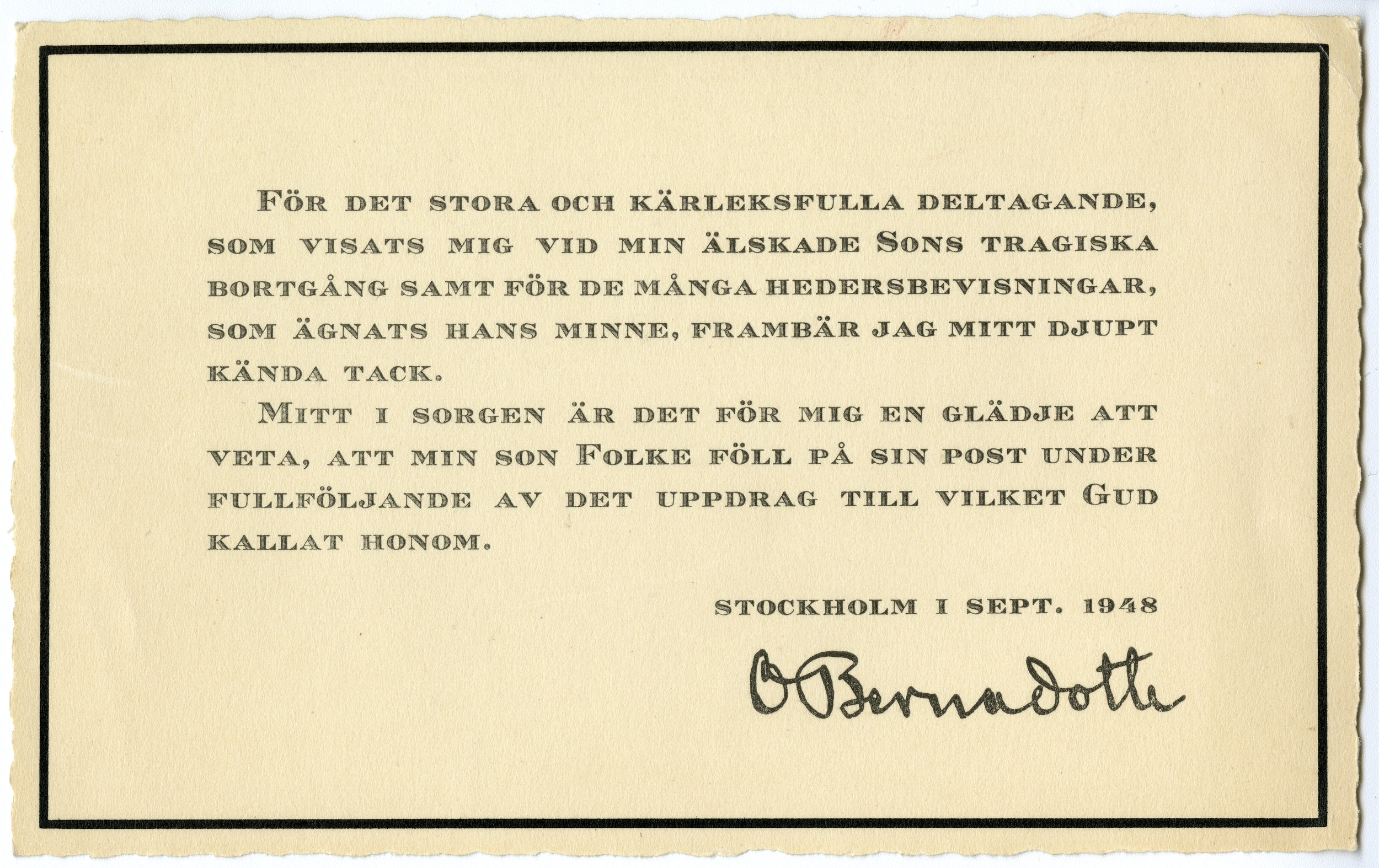The End
“He dies as the first visible martyr for the ideal of the United Nations.”
On 21 September 1948 it is exactly 1,312 days since Folke Bernadotte sat in an aircraft at Bromma Airport in Stockholm to travel to Berlin. The purpose of the journey was to open negotiations with the Nazi government in Germany to try to secure the release of the Scandinavians imprisoned in concentration camps. The negotiations were successful and what came to be known as the White Buses eventually succeeded in securing the release of about 15,500 prisoners of a number of nationalities and transporting them to Denmark and Sweden. The expedition becomes a model for a number of subsequent humanitarian aid missions to war-torn Europe.
After the end of the Second World War, Folke Bernadotte is commissioned to be UN mediator in the conflict in Palestine. He negotiates a ceasefire in the region and sets up what will become the UN’s first organisation of military observers, UNTSO. The work is hard and tiresome but together with his deputy Ralph Bunche, Bernadotte is able to sketch out a long-term peace plan for Palestine. Immediately before it is due to be presented, Folke Bernadotte is murdered together with one of his closest officers, Frenchman André Sérot.
On 21 September 1948, two white aircraft land at Bromma Airport. One aircraft contains the coffin of Folke Bernadotte that is now returning to Swedish soil for the last time. It’s an unusually cold September day and over the whole of Stockholm, the whole of Sweden and all over the world, the flags are hung at half-mast. A leader article in the American newspaper The New York Times writes: “He dies as the first visible martyr for the ideal of the United Nations”.
Many people are invited to the funeral on 26 September 1948 in Gustaf Vasa Church in Stockholm. People who were rescued from the concentration camps in Germany sit side by side with those who worked tirelessly at Bernadotte’s side during all of his operations. Gösta Lundin, who worked as director of the YMCA’s war prisoners aid in parallel with Bernadotte and the White Buses is there, as well as General Åge Lundström, who was at Bernadotte’s side when he died in hospital after the attack in Jerusalem. UN Secretary General Tryggve Lie is there, as well as organisations representing all the thousands who have Folke Bernadotte’s operations to thank for their lives. Also sitting in the church is Estelle, who has lost her husband, and sitting next to her are sons Bertil and Folke Jr., who have lost their father.


